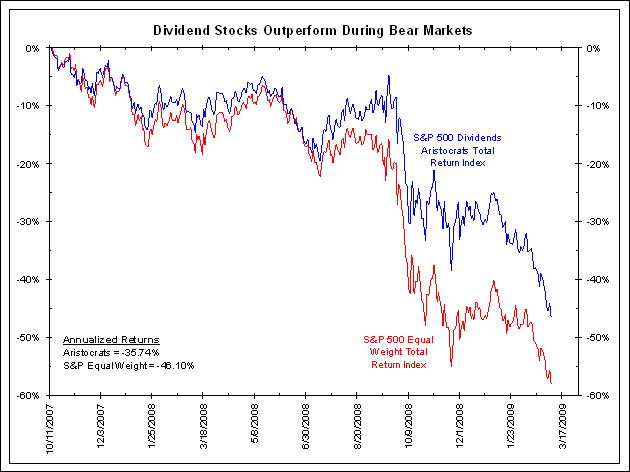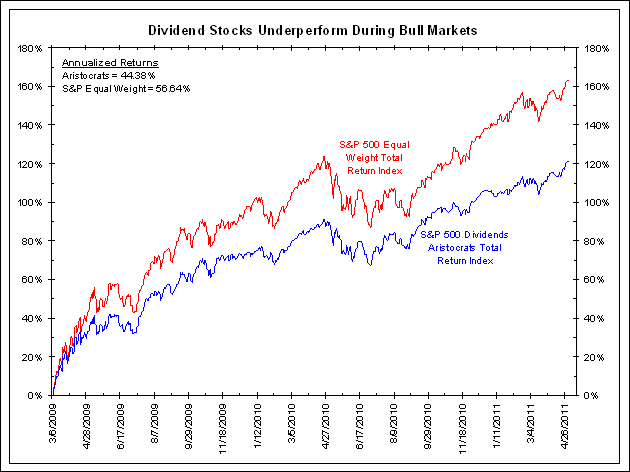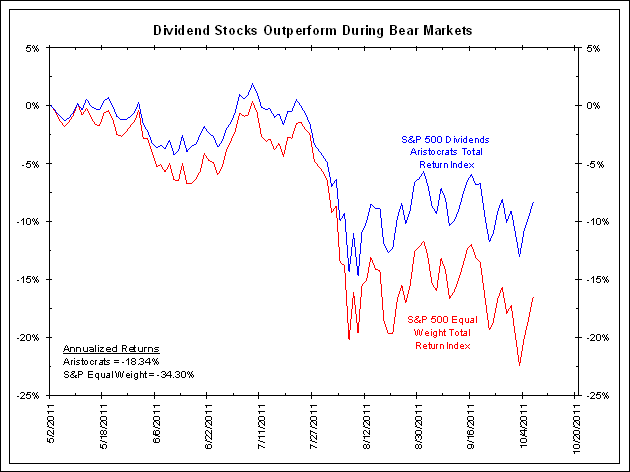Seeking Alpha – Why Dividends Matter In A Changing Market
Lately, it seems that dividend investing has become all the rage. Articles are being written at just about every financial site, talking about dividends. When you look at Money Watch, MSN Money, Kiplinger, Money Magazine, Forbes, Smart Money, and even here at SA, there is no shortage of dividend investing commentary…Mark Hulbert has written an article that I think you might find interesting. He says:Believe it or not, the stock and bond markets are behaving in a way that, with only one exception at the depths of the 2008-2009 credit crisis, they have not since 1958—53 years ago: The stock market’s dividend yield is now above the interest rate on the 10-year Treasury note.
With dividend yields outpacing the 10 year Treasuries, perhaps we are beginning to see a paradigm shift back to that pre-1958 market model. Investors can now find companies that have a history of paying dividends, companies that are increasing those dividends annually, and companies that have the earnings power to continue making those dividend payments. Dividend investing may very well become the norm moving forward.
Comment
To be sure that these past few bull/bear markets were the rule and not the exception, we also compared total returns of these two indices on all days when the S&P Total Return Index was up versus all days when the S&P Total Return Index was down. With data going back to the beginning of 1990, dividend-paying stocks returned an average of 66 basis points per day on days the stock market was up. The S&P Equal Weight Index returned an average of 77 basis points per day on those same days. On days the stock market was down, dividend-paying stocks returned an average of -67 basis points per day. The S&P Equal Weight Index returned an average of -80 basis points per day.
Rather than being concerned with reaching for yield, the charts and data above suggest dividend stocks outperform during bear markets and underperform during bull markets. However, if investors are savvy enough to know which way the market was heading in general, why even bother distinguishing between dividend-paying stocks and non-dividend-paying stocks?
Source:
Bianco Research, LLC.
October 10, 2011





What's been said:
Discussions found on the web: